A LITTLE OVER A HUNDRED YEARS AGO who could have imagined that Swami Vivekananda would be admired and adored today by millions all over the world? Even during his lifetime many famous people—like the scholars Max Müller and Paul Deussen, Sir Hiram Maxim of machine gun fame, philosopher and psychologist William James, scientist and in-ventor Nikola Tesla, the great actress Sarah Bernhardt, the millionaire Francis Leggett—were impressed and inspired by him. Who could have imagined that even after his passing away this sannyasin would influence Nobel laureates like Romain Rolland? Who could have believed that his ideas would shape the course of the world thought for centuries to come?
There is no doubt that Swamiji’s influence over the minds of the rich and poor, literate and illiterate, was possible because of his divine power. But there was another important factor: his unique style of presenting traditional Indian spirituality to people of a diff erent religion, learning, and culture.
This is a perfect example of cultural transference. If Swamiji’s divinity generated the power, cultural transference gave his message the necessary direction. If spirituality alone could make a person a successful preacher as Swamiji, then sages like Trailanga Swami and Pavahari Baba could have been equally successful. On the other hand, if mere oration alone was enough, then every religious leader appearing at the World’s Parliament of Religions at Chicago would have been famous. All of them were loudly applauded, but it was only Swamiji who created history. When we look back at that period, we fi nd most of those preachers and their presentations have been forgotten, while Swamiji’s name and words are reverberating more than ever before throughout the world.
The style in which Swamiji delivered his talks in the US, England, and India cannot be pigeonholed in any of the known moulds. It requires a new term to describe it, and the best we can think of is ‘cultural transference’. The term ‘transference’ has a special connotation in psychology and psychiatry and was extensively used by Sigmund Freud. However, it is now being used in other areas to denote the act of transferring something from one form to another, particularly from the past to the present. In such transference the essence is never lost, but radical changes take place.
Swamiji repeatedly asserted that Vedanta, which was confi ned to the forests and monasteries, must be brought into the everyday life of the people and be made practical. The wisdom that was held in the hands of a few reticent monks had to be broadcast to all. The required transference, for a different people belonging to a different place and time, needed a divine effort. And that is exactly what Swamiji accomplished. But before we look at the words ‘transference’ and ‘culture’ we need to understand the need for cultural transference in the globalized world.
Globalization and Culture
The advent of different prophets is followed by a paradigm shift in the character of the society in which they lived. This change is the result of their spiritual message. Swamiji’s message emphasized the divinity and unity of human beings and the spiritual unity of all religions. While Swamiji preached the message of spiritual unity of all life, science and technolog y discovered the physical and mental unity through their fi ndings and inventions. The Internet, in recent times, is binding the world in diverse ways. Exclusivity is slowly becoming a forgotten concept and ideal. We think, live, learn, study, eat, market, and do everything globally. We can proudly claim to be the first generation of global citizens.
Globalization refers to making the world small and familiar and also to the intensification of global consciousness. The term means the phenomenon of scientifi c, technological, economic, political, and cultural exchanges brought about by modern communication and transportation. Th is has opened up national boundaries and societies and helped release the vast human potential, talent, and creativity. Although globalization is not new, it is more pervasive and stronger than before.
Apart from the other ties, cultural ties also grow through globalization. However, some global ties cause severe strain, like ideas of freedom of expression clashing with the views held by orthodox societies and religious groups, or the spread of infectious diseases. Whether the benefits out weigh the disadvantages, globalization is an integral fact of the world and is here to stay. Like every new development, globalization has also come with its share of problems, which need quick and correct handling. Some of these major problems are:
Consumerism · This term describes the effects of equating personal happiness with material possessions and consumption. The preoccupa tion of society with the acquisition and consumption of goods, far in excess of their means and needs, dates back to the first civilizations of ancient Eg ypt and Babylon. Consumerism is the first progeny of materialism, which found respectability in Greece among the Epicurean philosophers and among the Charvakas in India. By its very nature consumer ism is opposed to any kind of spirituality, and in the long run it consumes the consumers. Consumerism became widespread in the twentieth century under the infl uence of neo-liberal capitalism and globalization.
Indi
erence to One’s Culture · With the thrust of global forces and consumerism the first casualty is the uprooting of indigenous cultures, values, and religious beliefs. Without the restraining force of culture, the senses tend to go wild in the midst of sense objects.
‘Culture’ is a difficult term to define. Alfred Kroeber and Clyde Kluckhohn compiled a list of more than two hundred different definitions of culture in Culture: A Critical Review of Concepts and Definitions.1 A 1982 document from the unesco states that culture is the ‘set of distinctive spiritual, material, intellectual and emotional features of society or a social group, and that it encompasses, in addition to art and literature, lifestyles, ways of living together, value systems, traditions and beliefs.’2
In whatever way we may define or understand the meaning of culture, the fact is that the growth of any culture requires tremendous efforts and sacrifi ces over centuries. Culture protects its people from extirpation, gives them an identity, and propels them forward in life. Humanity has progressed fast because of its cultural evolution.
Imitation of other Cultures · A more serious problem caused by globalization is the possibility of picking up wrong practices from other cultures. Each culture is the specific outcome of a people trying to conquer a specific environment. Any culture has to give certain licences to its people to counter some unavoidable problems. These practices may be a taboo in other societies because of a different environment. With the boundaries of specific cultures being broken down, the fear of people picking up the wrong things from a different culture has grown substantially. For example, people of many countries are asserting their freedom of expression without first learning the rigours of responsibility.
Misunderstanding of other Cultures · Except for truly spiritual people, we all suffer from the problem of the ‘missing tile syndrome’, according to which our attention is naturally drawn towards the shortcomings of others.
Having grown up in various sequestered cultures, it is natural for us to feel shocked at the sudden exposure to alien habits and cultures. Without proper understanding some of these alien traits may appear obnoxious, which in turn adversely affects the concept of global citizenship. Whether we like it or not, one’s present and past are exposed to the world, which has every reason to misunderstand and misinterpret one’s culture. If one’s ways, views, and philosophies are not presented properly, one is ridiculed, which affects one’s confidence. This may ultimately lead to the death of a culture. This kind of problem has occurred often in human history, when a powerful race destroyed the culture of a weaker one without realizing its uniqueness.
Cultural Preservation and Transference
‘Unity in diversity’ is the language of nature and will also be the language of future humanity. Cultural interaction has become a necessity and so there is a need for correctly understanding, preserving, and presenting one’s culture. Cultural preservation and transference will be keys to real global citizenship.
To counter consumerism, materialism, superficiality, and other problems mentioned earlier we have to tune ourselves to higher values and learn the modern modes of spirituality. For this age and future ones spirituality must always be coupled with reason an science. When we know that our solar system is more than 4 billion years old and the universe more than 13.7 billion years old, we cannot go on believing in creation myths that say the world is a few thousand years old. Now that we know that life evolves, we cannot believe in spontaneous creation. We cannot believe in the mumbo-jumbo of old witch-doctors and physicians of a bygone era, who looked into their worm-eaten worn-out books to prescribe some dubious concoctions.
Sri Ramakrishna also pointed out that the ‘coins current in the time of the Nawabs are not legal tender in that of the Badshas.’3 He gives another example: ‘Nowadays the decoctions of roots and herbs of the orthodox Hindu physicians cannot be given to a fever patient. By the time that kind of medicine begins its slow process of curing, the patient is done for. Therefore only a drastic medicine like the allopathic “fever mixture” is effective now.’4
Linguistics, in recent years, has started addressing the problems involved in the transformation of meaning from one culture to another. Different cultures interpret the same situations in different ways. Although human intellectual and emotional needs do not substantially differ from one culture to another, the way we perceive and interpret cultural situations can diff er substantially from one language to another.
Words convey the atmosphere and rhythm of a cultural, historical, and aesthetic tradition. Each word has a long history of evolution, and each word represents a concept or reflects an emotional landscape. Formulations that express emotional states, for instance, gain a certain refinement in one language that cannot be reproduced with the same intensity in another language. Thus, when a person from Eastern India talks of sharat, autumn, because of its association with the Durga Puja, the connection would be missed by people from other parts of the world. Similarly, Easter has no special significance or evokes no enthusiasm for a non-Christian.
Words gain meaning through their associations with other words, through their cultural and historical past, and through their rhythmic and phonetic constructions within a given sentence. So, in the process of presenting an idea before an audience of a different culture, the speaker has to draw information from various disciplines in order to do justice to its specific textual situations. Th is is the reason why there is always a big onus on cultural ambassadors, whose job requires interpretation—a special skill requiring a good memory—mental stamina, presence of mind, a mastery over the languages, and above all inspiration.
The Prophet of Cultural Transference
We admire the power and greatness of the old prophets and seers, who were the real world movers. These extraordinary people spoke about the nature of Reality and the goal of human life.Today their recorded words are in an archaic language we hardly understand and relate to. That is because language evolves. Later other sages come and interpret the teachings according to the understanding and the needs of the age. This is a kind of cultural transference of spiritual wisdom, from the past to the present, within the same cultural milieu. But when the ancient message has to be renewed and given to a globalized world and to global citizens, then it becomes a more difficult mission. This was the great task before Swamiji: to preach to a global audience. His message was basically spiritual and thus universal, and that is why his words, views, and philosophy neutralize the maladies born of globalization.
During one of his rare moments of self-revelation, Swamiji said: ‘I have a message to the West as Buddha had a message to the East.’5 Swamiji’s message for the world focused on the essential divinity of humankind, a cardinal truth of Indian spiritual tradition. Th e presentation of the ancient but eternal truths, authenticated through his personal spiritual experiences, to an audience that had no prior exposure to such ideas, required a skilled handling of cultural transference through an extraordinary power of translation and interpretation.
When we go through the works of Swamiji, we find his words softly caressing our psyche, hitting us with a deep force, magically lifting us up, gently churning our minds, leaving us dazed by its power, and yet soothing and refreshing like the summer rain. What is really mind-boggling is the fact that all these feelings come all at once.
Swamiji’s speeches were heavily sprinkled with ideas taken from the then prevalent knowledge of science, sociology, history, and other branches of studies. Whenever possible he used examples from the theory of evolution and electromagnetism. This made his ideas much more acceptable to contemporary minds. Thus we find Nikola Tesla regularly attending Swamiji’s lectures in which he was presenting the ideas of akasha and prana. Had Swamiji stuck to explaining things in a traditional manner, he would have never succeeded in getting such a great inventor to regularly attend his classes.
Swamiji initiated cultural transference by means of a new style of translation and interpretation of Sanskrit texts. He took such liberties with texts that would have seemed sacrilegious to other ordinary gurus. Only a prophet could do what he did. Realizing that equivalence is not an inherent characteristic of translations, Swamiji stayed true to the idea and not to the text.
When he made an impromptu translation of various Sanskrit texts, the words coming out from him were apta vakyas, words of a rishi. These translations can be seen as altogether new—as has been commonly believed—or as a case of cultural transference. The result was that these statements became a source of spiritual as well as secular wisdom. The list is long, but we mention some of his famous quotations:‘Sa vidya ya vimuktaye; Education is the manifestation of the perfection already in man.’6‘ Uttisthata jagrata prapya varannibodhata;7 Arise, awake, and stop not till the goal is reached.’8‘ Tat tvam asi;9 Each soul is potentially divine.’10‘ Amritasya putrah;11 Children of immortal bliss.’ 12‘ Kshurasya dhara nishita duratyaya; 13 The road to the good is the roughest and steepest in the universe.14‘ Ihamutrartha phala bhoga viraga;15 Religion starts with tremendous dissatisfaction with the present state of things, with our lives.’16
All such translations are unique. For example, when we read, ‘Arise, awake, and stop not till the goal is reached’, we realize that these words have a very special meaning and thrill our ears and minds. Our hearts seem to resonate with Swamiji, and we cannot stop ourselves from being inspired and ignited with divine fire. The English words he used are not only the translation of the Sanskrit words of the Katha Upanishad, but also carry the explanation thereof. This one quotation can become the guiding motto for anyone who wants to go forward in life—students, workers, executives, and spiritual seekers. While keeping to the essence of the Sanskrit words, Swamiji’s translations are unique, sincere, and not mere theological.
Highlighting Swamiji’s unique aspect at the Parliament of Religions, Marie Louis Burke writes:
At the more popular sessions of the Parliament, and also later during his tour through the United States, he deliberately couched his message in language as simple and untechnical as possible, for his intention was to reach the people with words and ideas meaningful to all. He was a World Teacher, not a pedant. But when the occasion called for a scholarly presentation of Hinduism, as it did at the Scientific Section, where sharp-minded philosophers, theologians, and scholars came to learn and perhaps to challenge, he very likely gave as much rein to his vast learning as was necessary, both in his talks and in the lengthy and animated discussions that followed.17
In the past people understood the language of authority, but today’s culture has a language of its own. If in the present times religions are losing their influence, it means that they are not speaking the ancient teachings in today’s language. This demands cultural transference, as done and shown by Swamiji.
Swamiji’s travels all over the world opened the doors, as it were, to many religious and spiritual preachers from India to teach Vedanta. It is found that practically every successful preacher from India was using Swamiji’s transference style, albeit unknowingly. Thus we find a huge and growing literature relating Vedanta and its principles to society, health, success, management, science, and so on.
Swamiji is the prophet for today and tomorrow. When we see his teachings in the light of cultural transference, only then can we understand the true signifi cance of his advent. He is the bridge between the old and the new, the East and the West, between science and spirituality, and above all between individuality and universality. He then appears to us as ‘amritasyaesha setuh; the bridge leading to immortality.’18
(Source: Prabuddha Bharatha January 2013)
References
1 . Alfred Kroeber, Clyde Kluckhohn, Wayne Untereiner, Culture: A Critical Review of Concepts and Defnitions (New York: Vintage, 1952
).
2. UNESCO, Mexico City Declaration on Cultural Policies, World Conference on Cultural Policies, Mexico City, 26 July–6 August 1982
, <http://portal.unesco.org/pv_obj_cache/pv_obj_id_A274FC
8367592F6CEED-B92
E91
A93
C7AC
61740000/filename/mex-ico_en.pdf> accessed 13
November 2012
.
3. Swami Saradananda, Sri Ramakrishna the Great Master, trans. Swami Jagadananda (Chennai: Ramakrishna Math, 20I0
), 465.
4. M, The Gospel of Sri Ramakrishna, trans. Swami Nikhilananda (Chennai: Ramakrishna Math, 20I0
), 464.
5. The Complete Works of Swami Vivekananda, 9
vols (Calcutta: Advaita Ashrama, I
–8
, 1989
; 9
, I997
), 5.3I4
.
6. Complete Works, 4.358
.
7. Katha Upanishad, I
.3.I4
.
8. Complete Works, 2.87.
9. Chhandogya Upanishad, .
..
10. Complete Works, I
.I24
.
11 . Shvetashvatara Upanishad, 2.5.
12 . Complete Works, I
.II
.
13 . Katha Upanishad, I
.3.I4
.
14. Complete Works,
8.383
.
15. Sadananda Yogindra, Vedantasara, I5
.
16. Complete Works, 2.I23
.
17 . Marie Louise Burke, Swami Vivekananda in the West: New Discoveries, 6 vols (Calcutta: Advaita Ashrama, 1992
), I
.94
.
18 . Mundaka Upanishad, 2.2.5.

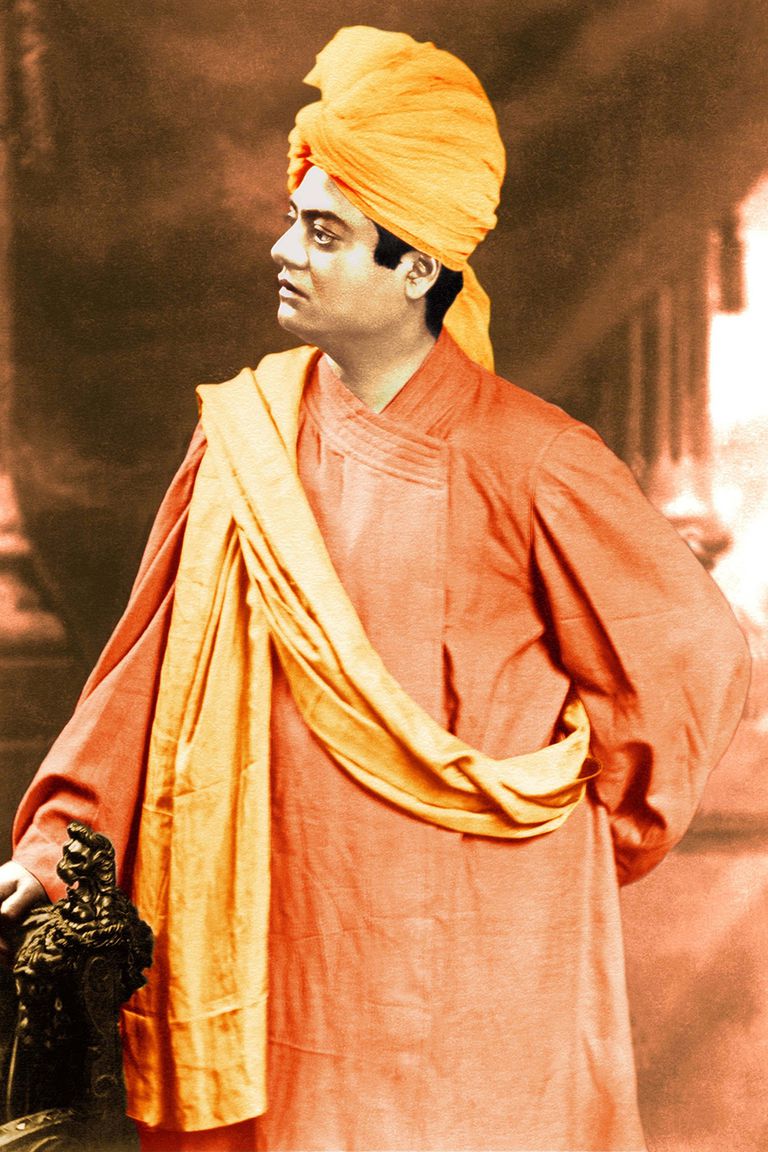
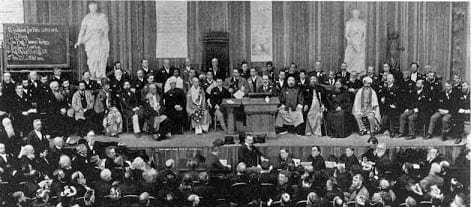

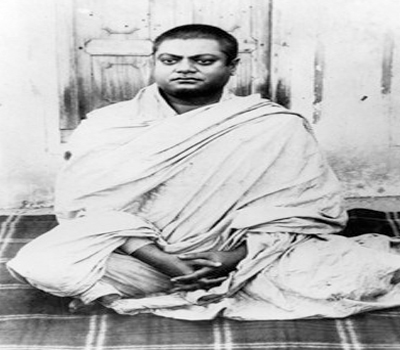
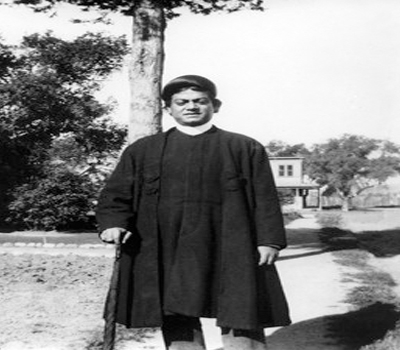
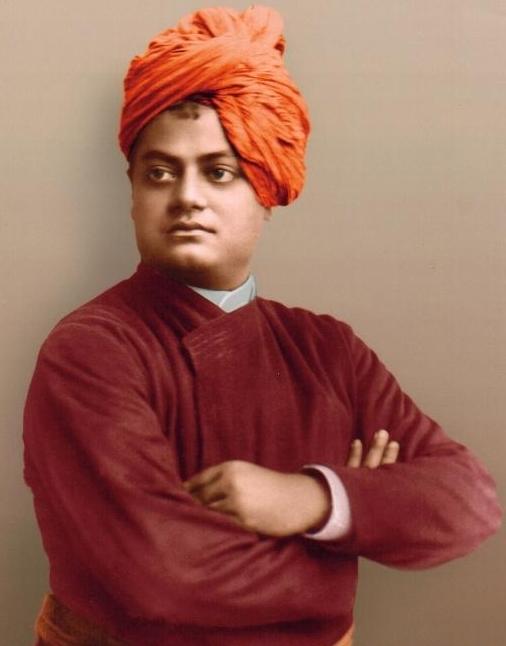
Leave A Comment